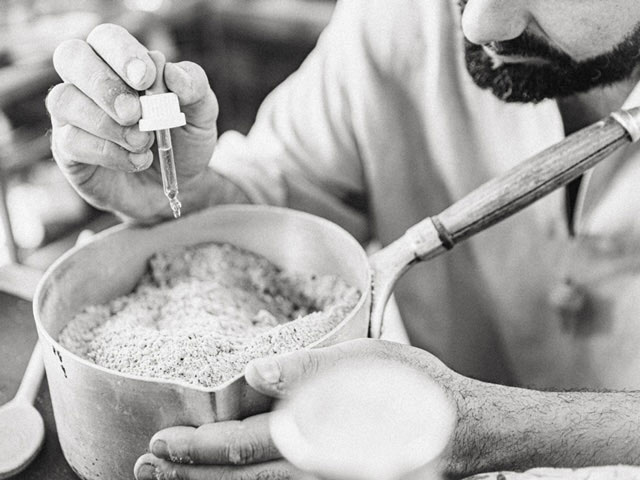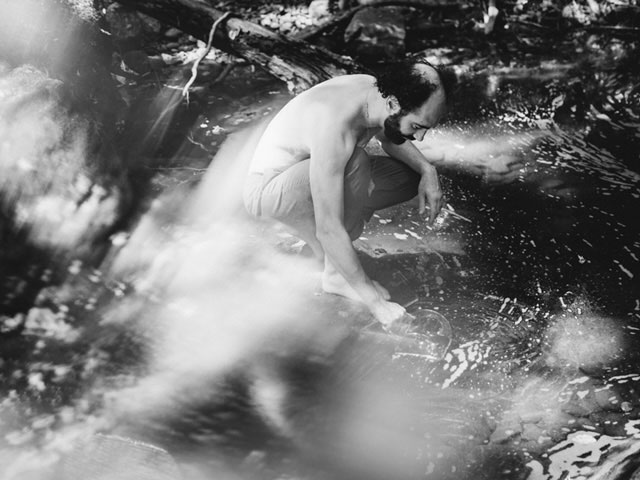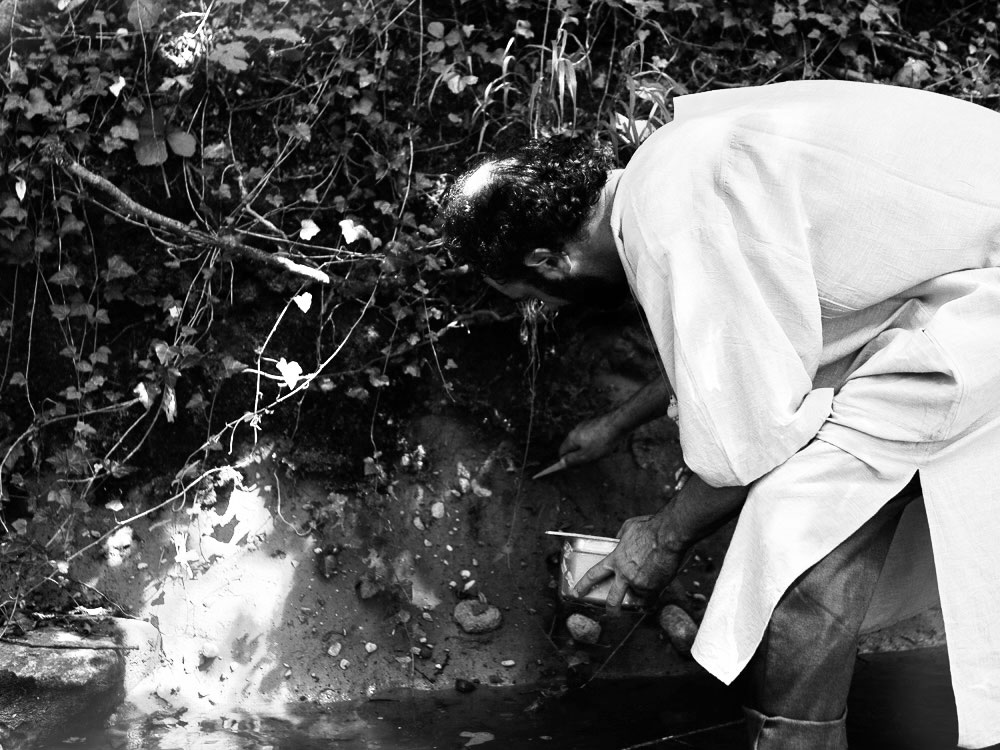Library of colors
Tartaric acid
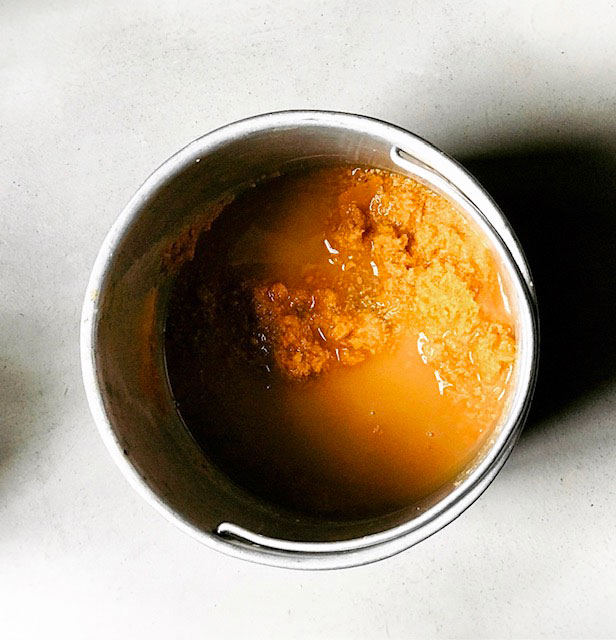
The vine rooted in this rich soil of clay and silt, outlining the contours of the hillsides of the Hauts d'Hermance, grows under the benevolence of men and women of heart, erudite and living in total symbiosis with the plant world, perpetuating every day, for several generations, the right gestures of the art of the vine. The vine draws deeply from the soil, at every moment, the minerals and nutrients essential to its development and survival, to produce one of the most beautiful miracles of life, the flower, then the fruit.
The epitome of the plant world, the fruit is the bearer of life and much more... When pressed, the mesocarp yields a juice with a thousand and one virtues that have been known for thousands of years. It contains, among other things, two elements that are essential for mineralisation, potassium and tartaric acid, which, when subjected to temperatures below 4°C, bind together to form a prism-shaped, colourless, transparent crystal made up of calcium and magnesium carbonate, lining the barrels and casks of wine.
Mordant naturel utilisé dans la teinture végétale par les premiers tisserands, l’acide tartrique, ce résidus minéral hautement vibratoire , chargé d’amour et de passion, demeure un élément central dans ma quête empirique et alchimique de la couleur magique, celle qui vibre et qui vie par elle même, dans un dialogue invisible , un chant de la matière guidant mes traits, pour entrer en résonance avec le cœur de l’homme, dans un tourbillon d’émotions.
Black vine
On pruning days, at dawn on a cool winter's morning, or when the first rays of sunlight illuminate the groves frozen in an ephemeral frost, I collect the shoots and place them in a metal box, which I set on fire. Deprived of oxygen, the vine shoots calcine and crack in a constrictive dance, giving me a meditative, galactic black with silvery matt reflections.
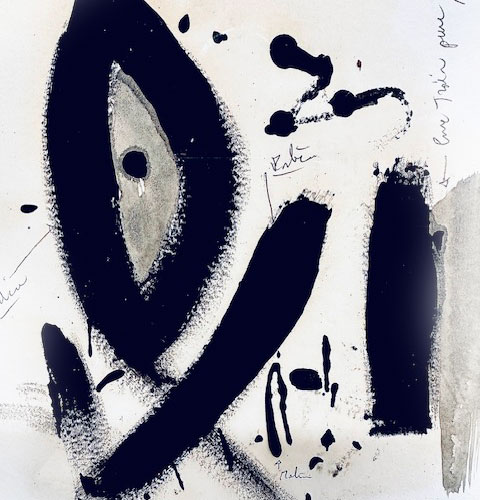
Walnut husk
One summer evening, in the twilight of a majestically magnetic moon, I remember a moment of unheard-of grace, of astral lightness, when one of the walnut trees on the chemin de La Chapelle called me to enter into communion with it, its density magnetising me. Its branches bloomed with young bogues of bright, energetic green. As I inhaled their enchanting, addictive fragrances, the timeline gradually disappeared and I felt like a dizzy bee, drowning in euphoric pollen. With her divine permission, I picked a few scattered bugs that had fallen onto the oily grass and left them to macerate for months in rainwater, to extract the precious amber-tinged brou.

Meinier saffron
Sometimes people have crazy ideas, persifuted by their memories of the dreamy brats they were, guided by this inner light that illuminates their doubts on the edge of realization, they sow a seed, water it with love, and "you'll see", in a solitude where only the right flourishes.
He's convinced that it's possible... When suddenly, this seed becomes a flower in the field of possibilities, from which I extract the dye molecules from the pistils.
Travelling thoughts and admiration for the man from Meinier who woke up one morning with the idea of growing Saffron on the shores of Lake Geneva.
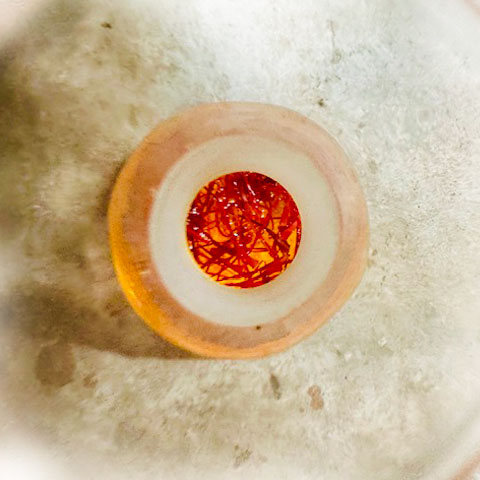

The daffodil
The daffodil is the orchid of frozen fields, the winter sunflower, a little bell that rings the time to love. After a peaceful maceration, the flavonoids contained in its petals are liberated to produce a vibrant, solid yellow. Just like primrose, sunflower, chelidonia, solidago virgaurea and broom.
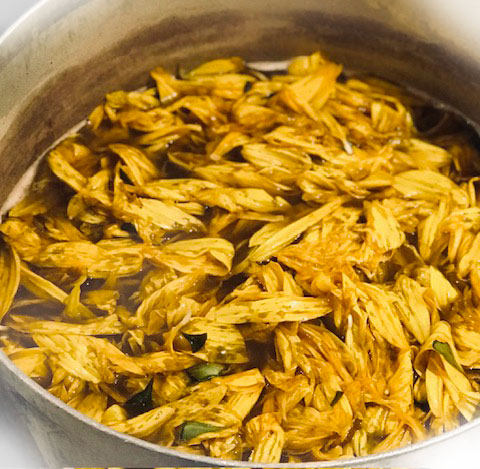
Red of Valemossa
I borrow from nature what exists in my immediate vicinity to restore it in the form of magical, contemporary abstractions. I use certain minerals and plants with dyeing properties known since time immemorial and since forgotten. They are there, all around us, calling to me. Sometimes it's the rhizome, sometimes the young shoot bursting with tannins, and very often the anthocyanins contained in the flower.
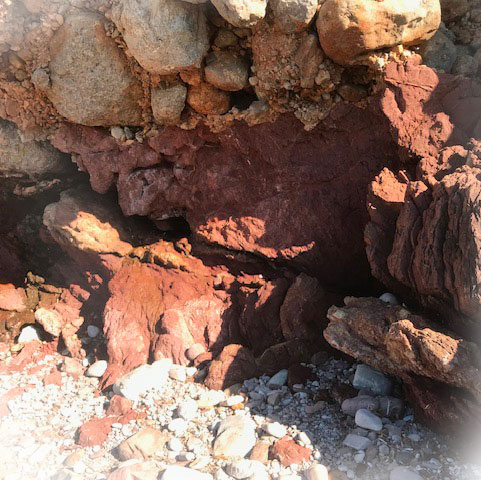
And thus, based on lunar cycles, their energies, the time of year, I conscientiously harvest, sparingly so as not to cause harm. All the while, listening quietly to nature that has so much to tell and religiously respecting its ultimate divine power and majestic beauty.
And sometimes I pick elsewhere, during a journey, seized by the beauty and energy of the place.
Ochre is a subtle blend of clay, quartz and oxides, and owes its sandy appearance and texture to its history.
Over two hundred million years ago, Provence and the Balearic Islands were covered by water. As a result of climatic changes, the ocean retreated, leaving the ochre-coloured sand to form islands and landscapes of a thousand shades.
I'm particularly fond of the wild and rugged nature of the island of Majorca, shaped every day by the whims of the Mediterranean.
As I descended from the village of Valldemossa, walking along the paths that echo Chopin's preludes, and whose tramontana still whispers George Sand's thoughts, I discovered this cove that seemed untouched by any influence. I borrowed a few handfuls of the world's heritage, to restore its intensity in my next works.
George Sand wrote: "The mind seeks and the heart finds".
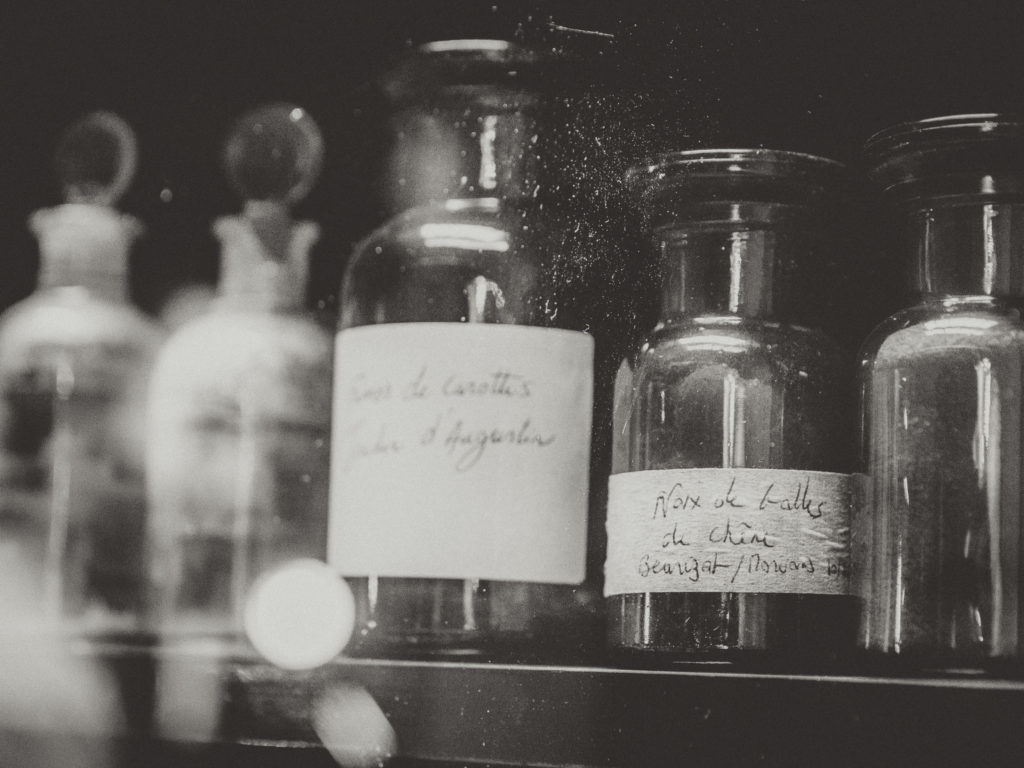
Grey clay
Made from the grey clay of the Hermance river, it carries the memory of worlds and vibrates at a high frequency.
I use clay for its energetic properties of absorption and purification, its memory of worlds, and its organic and primordial beauty; as a medium for my works, which I sculpt to reveal their light; and as a mineral component in egg tempera
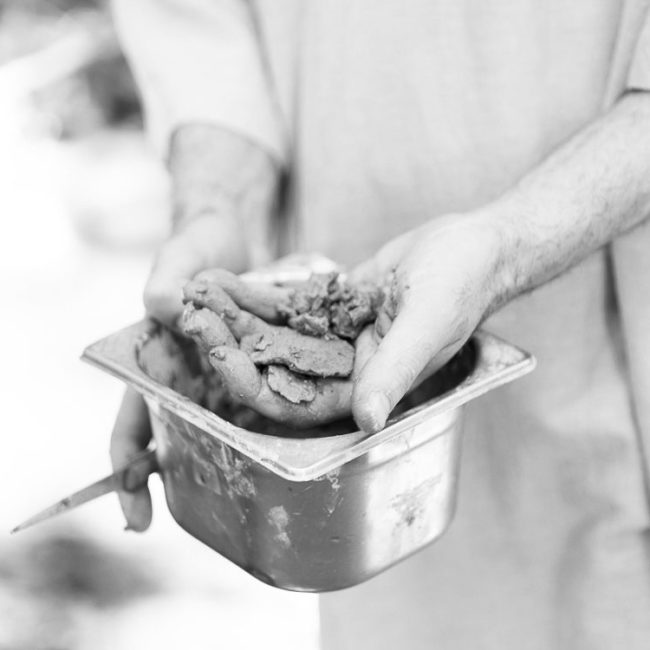
Visual identity & web design : dianeclaire.z &
© 2024 Julien_peltier
Photo credit : Vincent Sastre & Eliott Antoine
Extracts from the short film Alchemia directed by Stéphane Courbat


